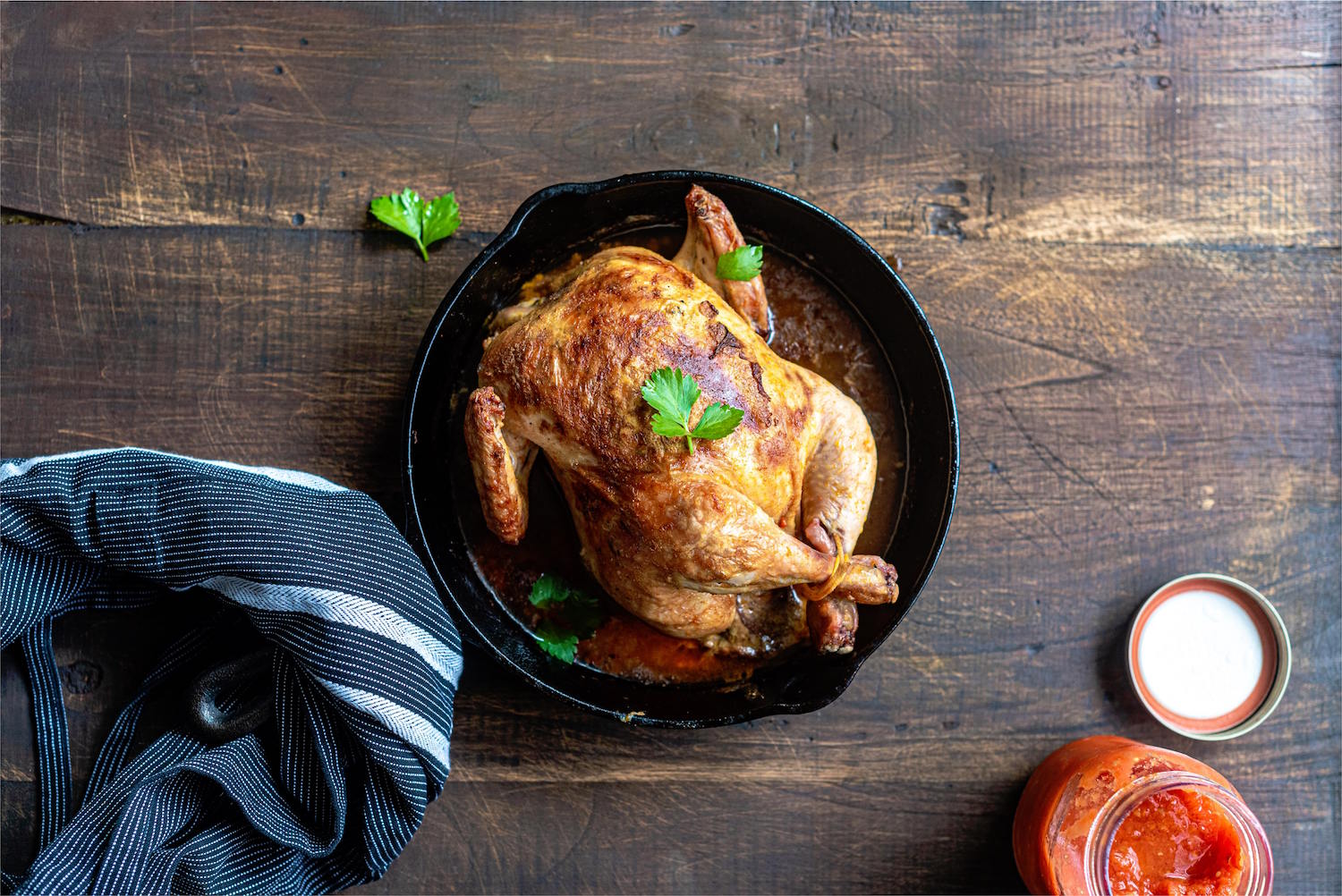Guest Columnist Erin Axelrod Prepares a Backyard Feast from the Sun.
Hold the Fossil Fuels, Please
If you are reading this from the traditional lands of the Coast Miwok and Pomo (so-called Sonoma County), chances are high that the sun is SHINING. Since we live in a region ranked by NASA and CDC as in the top 10% of sunniest counties in the so-called U.S. (aka Turtle Island), it’s a great place to cook with the sun.
Solar cooking is a convenient cooking method that I and my partner have used for more than two years to prepare daily meals—and it’s so effective that we’re skipping the conventional oven when we move into our off-grid home this fall. Since experiencing all the joys of solar cooking, I’ve often wondered how I managed before learning about this novel emissions-reducing and disaster-preparedness strategy.
My day job is as a worker-owner of a social-justice-oriented economic cooperative. Worker-owned companies (like Oliver’s Markets) are part of the solution to create what author/botanist Robin Wall Kimmerer calls “an economy of abundance.” Contrast this to what our business-as-usual economy often tricks us into feeling—a profound sense of lack and scarcity. Solar cooking is a great example of the abundance economy, where each sunny day provides free energy to process and cook food, building community in the process.
With solar cooking, I have access to the world’s best rice cooker, sun-roasted local root veggies, local meats cooked in the tenderest of ways, effortless slow-simmered stews and fossil-fuel free bone broths, home-baked breads (there even exist solar-oven bakeries), easiest-to-peel hard-cooked eggs, sun-baked fruit crisps, solar scones, solar-dehydrated backpacking foods—and so much more!
Yes, I confess the first thing I do when I wake up, once the fog breaks, is ponder: What can I cook in my solar cooker today?
Why Do It?
1 Health (get outside, away from gadgets, and eliminate exposure to natural gas cook-stove)
2 Ecological (zero fuel costs/consumption)
3 Easy (minimal fancy appliances to maintain/screw up/replace/move)
4 Community building (a great way to meet the neighbors)
5 Fun/creative (so many possibilities)
6 Fire resilience/disaster preparedness (a quick and portable cook-stove in case of evacuation, and freedom from power shut-offs)
7 Tune into nature (many small opportunities throughout the day to get up and reorient the solar cooker as the sun moves in an arc across the sky)
Ingredients
Note: To make this recipe vegetarian/vegan, just eliminate the chicken and double the veggies
- A 2-5 lbs. humanely-raised hormone-free local chicken (try Thistle Meats in Petaluma)
- 1-2 lbs. assorted root vegetables (dry-farmed potatoes, carrots, parsnips, rutabaga, etc.)
- Assorted herbs (rosemary, thyme, whatever is in your garden)
- 1 locally-gleaned lemon (if available on your block, Meyers are superb!)
- Side salad for serving (ideally with greens/edible weeds and edible flowers from your garden)
Hardware
- Sun Oven or other box-style solar cooker with temperature gauge (someone in your neighborhood may well have one of these collecting dust in their garage)
- Cast iron dutch oven or other dark black cooking pan (a must-have, as they absorb the heat better)
- Meat thermometer
Directions
Note: this recipe must be started in the morning
- Bring solar cooker outside and orient to the sun (your shadow should be straight-on, not slanted, or the sun should be directly behind you)
- Place cleaned chicken in cast iron pan and stick a lemon in its middle cavity
- Rough chop vegetables and herbs and place around the chicken
- Drizzle with your favorite oil and sprinkle a bit of salt and pepper
- Place pan uncovered inside the box solar cooker, which will give it a golden brown crisp; within an hour the temperature should be up to roughly 275-300 degrees Fahrenheit
Cooking
- Check the cooker orientation every 20-30 minutes (or whenever you remember) and make sure it’s tracking the sun for optimal heat entry
- After 3-4 hours, check for 180 degrees on the meat thermometer, and it should be done (I’ve cooked a chicken faster midday around summer solstice)
- If you’re roasting veggies only, follow the same process, except cook for just 1-2 hours or until roots are soft and golden brown
- Enjoy with gratitude for the food, the land and the sun as you eat your feast, preferably in the garden just a few steps away from where it was cooked
Bio: Erin Axelrod is a partner and worker-owner at LIFT Economy (lifteconomy.com) where she accelerates ecological and justice-centered businesses. She does this through client work, a nine-month online learning journey she co-developed called the Next Economy MBA, and a regenerative agriculture investor network. She also co-founded the Force for Good Fund, a $1.1M pilot fund that invested in 13 women and POC-led social enterprises. Erin spent the beginning of her career working at Daily Acts nonprofit, teaching about the joys of greywater and rainwater systems and transforming lawns into food. When not working, she loves to plant trees, raise backyard chickens, milk goats, harvest wild foods like mushrooms, greens, elderberries, and bay nuts and of course, cook with the sun. She can be reached at erinaxelrod.com or erin@lifteconomy.com



